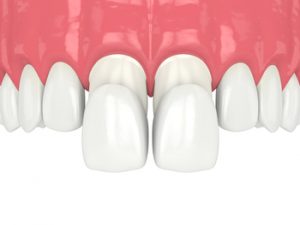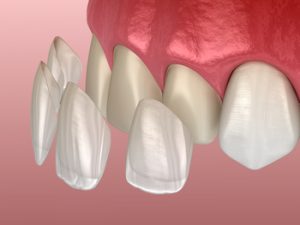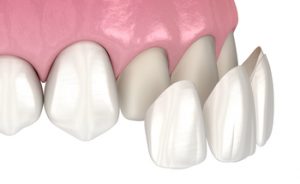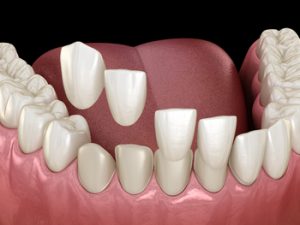In the world of cosmetic dentistry, dental veneers stand out as a popular solution for enhancing the appearance of one’s smile. They are sought after for their ability to conceal a range of dental imperfections, from discoloured teeth to misshapen teeth.
However, the question arises, “Can you get veneers with gum disease?” This question is particularly pertinent for individuals suffering from gum disease or periodontal disease who are considering veneers to improve their dental aesthetics.
This comprehensive guide will explore the interplay between gum disease and the feasibility of getting dental veneers, delving into the necessary conditions for veneer placement, the impact of gum disease on the process, and how to achieve and maintain oral health conducive to cosmetic dental treatments.
Understanding Gum Disease and Its Impact on Dental Health

Periodontal disease, commonly called gum disease, poses a significant threat to dental health, affecting many adults worldwide.
This condition ranges from mild to severe stages, initiating as simple gum inflammation and potentially leading to more serious consequences like tooth loss if left untreated. Understanding the progression of gum disease, particularly its impact on the gums and teeth is crucial for anyone concerned with maintaining their dental health or considering dental enhancements like veneers.
Progression and Effects of Gum Disease
Gum disease undergoes several stages, each with increasing severity and potential harm to dental health:
Gingivitis: This initial phase is marked by swollen gums and bleeding during routine dental hygiene practices. It results from the accumulation of plaque, which, if not removed, can harden into tartar at the gumline, further irritating the gum tissue.
Periodontitis: If gingivitis goes untreated, it can advance to periodontitis. During this stage, the gums start to pull away from the teeth, creating pockets that can become infected. The body’s immune response to this infection, combined with bacterial toxins, begins to break down the bone and connective tissue that holds teeth in place.
Advanced Periodontitis: This is the most severe stage of gum disease, where the fibres and bone supporting your teeth are irreversibly damaged. It can lead to receding gums, significantly impacting the appearance of one’s smile, and increase the risk of tooth loss as teeth may become loose or fall out.
The Intersection of Gum Disease and Dental Treatments
The presence of gum disease, especially in its advanced stages, can complicate or even preclude certain dental treatments:
Receding Gums and Tooth Loss: Receding gums, a common consequence of periodontitis, expose more of the tooth and its root, increasing susceptibility to decay and leading to aesthetic concerns. Tooth loss, a dire outcome of untreated gum disease, can profoundly affect one’s ability to eat, speak, and smile confidently.
Treatment Challenges: Addressing severe gum disease often necessitates comprehensive strategies, including non-surgical and surgical interventions. Surgical treatments, such as pocket reduction procedures, aim to clean the pockets around teeth and prevent further damage by enabling better access for cleaning and maintenance.
Considerations for Dental Veneers: The viability of dental veneers heavily depends on the health of the underlying gum tissue. Swollen or receding gums can undermine the foundation necessary for veneers to adhere correctly and look natural. Consequently, achieving gum health through appropriate treatment is essential before cosmetic dental procedures.
Emphasising Oral Hygiene and Preventive Care
The key to avoiding the complications of gum disease lies in rigorous oral hygiene and regular dental check-ups. Effective practices, such as brushing with fluoride toothpaste, flossing, and using antimicrobial mouthwash, can significantly mitigate the risk of gum disease. Regular dental visits enable early detection and management of gum issues before they escalate into severe problems, preserving natural and cosmetic dental work.
The Relationship Between Gum Disease and Dental Veneers
When considering dental veneers—thin, custom-made shells designed to cover the front surface of teeth—it’s crucial to understand the role of gum health. Veneers, particularly porcelain veneers and composite veneers, require a stable foundation to adhere properly. This stability is compromised in the presence of active gum disease, which can cause gum inflammation, shifting teeth, and an uneven gum line, thus affecting the fit and appearance of veneers.
Can You Get Veneers with Gum Disease?

Whether you can get veneers with gum disease is nuanced and deeply intertwined with the overall health of your gums and teeth. Dental veneers, a cornerstone of cosmetic dentistry, are often sought by individuals who address aesthetic concerns such as discoloured, misshapen, or chipped teeth. However, gum disease introduces complexities, necessitating a careful oral health evaluation before proceeding with dental veneer treatments.
Impact of Gum Disease on Veneer Suitability
Gum disease, especially in its more advanced stages, can significantly affect the suitability of an individual for dental veneers for several reasons:
Chipped Teeth and Decay: Chipped teeth, often considered for veneer treatment, can be a sign of underlying issues like tooth decay or poor oral hygiene, as well as risk factors for gum disease. The presence of tooth decay must be addressed before veneer placement to ensure the longevity of the treatment and the health of the natural tooth underneath.
Foundation for Veneers: Veneers require a healthy, stable foundation for successful placement. Gum disease compromises this foundation, leading to receding gums and weakened tooth structures, undermining veneer treatments’ efficacy and aesthetic outcomes.
Surgical Treatments and Recovery: In cases where gum disease has progressed significantly, surgical treatments such as pocket reduction may be necessary to restore gum health. These procedures aim to reduce the depth of the pockets between the teeth and gums, removing places where bacteria can thrive. Recovery and rehabilitation of the gums must be fully achieved before considering the placement of veneers to ensure that the gums can properly support and frame the cosmetic enhancements.
Addressing Oral Health Concerns First
For individuals with gum disease considering veneers, the path to a transformed smile begins with addressing and treating the underlying gum disease. This includes:
Improving Oral Hygiene: Establishing a regimen of excellent oral hygiene is critical. Brushing twice daily, flossing, and using an antimicrobial mouthwash can help reverse the early stages of gum disease and prevent tooth decay, creating a healthier environment for future veneer placement.
Professional Dental Care: Regular visits to a dentist for professional cleanings and check-ups are essential. These visits allow for the early detection and treatment of gum disease and tooth decay, preventing them from advancing to stages that would preclude the possibility of getting veneers.
Tailored Treatment Plans: For those with more advanced gum disease, a comprehensive treatment plan tailored to their needs may involve non-surgical and surgical interventions. Treating gum disease and restoring oral health are prerequisites for cosmetic dental procedures, including veneers.
While gum disease presents challenges to getting dental veneers, it does not outright disqualify an individual from pursuing this cosmetic treatment. The key lies in effectively treating gum disease, restoring oral health, and ensuring that the teeth and gums are in an optimal condition to support veneers. By addressing issues like chipped teeth, tooth decay, and poor oral hygiene, patients can pave the way for successful dental veneer treatments, achieving the aesthetic results they desire with a healthy, supportive foundation.
The Role of Healthy Gums in Veneer Success
Healthy gums are not only crucial for the initial placement of veneers but also for their long-term success. Gum tissue free from disease provides a smooth, stable foundation for veneers, ensuring they fit seamlessly and look natural. Moreover, healthy gums are less likely to recede over time, which can expose the edges of veneers and lead to aesthetic and functional issues.
The Process of Getting Veneers After Treating Gum Disease
After successfully treating gum disease, obtaining dental veneers involves several critical steps. This process is meticulously designed to ensure that the transition from gum disease to a stunning smile is smooth and that the final results are aesthetically pleasing and sustainable. Key to this journey is ensuring that any underlying issues, such as the need for bone grafting or establishing a healthy gum foundation, are addressed to lay the groundwork for optimal dental health and the successful integration of veneers.

Establishing a Healthy Foundation
Before veneers can be considered, the foundation of the gums and bones must be assessed and fortified if necessary. This is particularly important for patients who have experienced significant gum recession or bone loss due to periodontal disease.
Bone Grafting: For those with bone loss, bone grafting may be recommended to rebuild the jawbone and provide a stable foundation for future dental work. This procedure helps restore the bone’s original contour and plays a critical role in preventing tooth loss by supporting the teeth and any future dental prosthetics, including veneers.
Healthy Gum Foundation: Achieving a healthy gum foundation is paramount. This may involve surgical treatments like pocket reduction, where the dentist removes tartar deposits deep below the gum line and smoothens areas of damaged bone. This allows the gum tissue to better reattach to healthy bone and reduces the depth of gum pockets, decreasing the risk of future bacterial accumulation.
Ensuring Optimal Dental Health
With the structural issues addressed, the next step is ensuring that the overall dental health is in its best possible state. This includes treating any remaining dental issues, such as cavities or minor misalignments, that could affect the longevity and appearance of the veneers. A comprehensive dental health check-up will identify any issues that need to be resolved before veneer placement.
The Veneer Placement Process
Once a healthy gum foundation is established and dental health is optimised, the process for veneer placement can begin. This typically involves:
- Consultation and Planning: A detailed discussion about the desired outcome and dental impressions or scans helps plan the veneer placement process. This stage may also involve digital simulations to preview potential results.
- Preparation of Teeth: This step involves slightly reshaping the natural teeth to accommodate the veneers, ensuring they fit comfortably and look natural. This may be minimal for some patients, but it’s tailored to individual needs.
- Fabrication of Veneers: Based on impressions taken, custom veneers are fabricated, often from porcelain, to match the natural colour and shape of the patient’s teeth.
- Bonding: Once the veneers are ready, they are carefully bonded to the teeth using dental cement. This step requires precision to ensure the veneers align correctly with the natural teeth and gum line.
- Final Adjustments and Review: After placing the veneers, any necessary adjustments are made to ensure a comfortable bite and a natural appearance. Follow-up visits may be scheduled to monitor the veneers and the health of the gums and teeth.
The transition from treating gum disease to getting veneers is a journey that requires careful planning and attention to detail. Patients can achieve the desired aesthetic outcomes with veneers by addressing the need for bone grafting, ensuring a healthy gum foundation, and optimising dental health. This comprehensive approach not only enhances the smile’s appearance but also contributes to the long-term health and stability of the dental structure, making the investment in veneers worthwhile.
Considerations for Patients with a History of Gum Disease
Patients with a history of gum disease must be diligent in their oral hygiene practices to prevent recurrence. This includes regular brushing with fluoride toothpaste, flossing, and antibiotic mouth rinse if a dentist recommends. Regular dental check-ups are also essential for monitoring the health of the gums and the veneers, allowing for timely intervention should any issues arise.
Conclusion: Achieving a Beautiful Smile with Veneers and Healthy Gums

Dental veneers offer a transformative solution for individuals looking to enhance their smile. However, gum disease can complicate the path to achieving this aesthetic goal. By prioritising gum health and addressing any instances of periodontal disease, patients can create a stable and healthy foundation for veneers. With the right care and maintenance, veneers can provide a durable and attractive solution for concealing embarrassing dental problems, ensuring a confident and radiant smile.
The first step for those considering veneers but concerned about gum disease is to consult a dental professional who can assess your oral health and recommend a tailored treatment plan. Achieving healthy gums is vital for veneer placement and fundamental to overall dental health and well-being.
Call to Action
If you’re considering dental veneers but are still determining the impact of gum disease on your eligibility, we invite you to contact Beyond Infinity Dental at (02) 8806 3799. Our team of experienced dental professionals is dedicated to providing comprehensive care, from treating gum disease to expertly placing veneers, ensuring your journey towards a beautiful smile is successful and health-focused. Don’t let gum disease stand in the way of your dream smile; take the first step towards a healthier, more confident you today.
References:
https://www.webmd.com/oral-health/gum-disease-treatments
https://www.dentalhealth.org/healthy-gums-and-healthy-body









